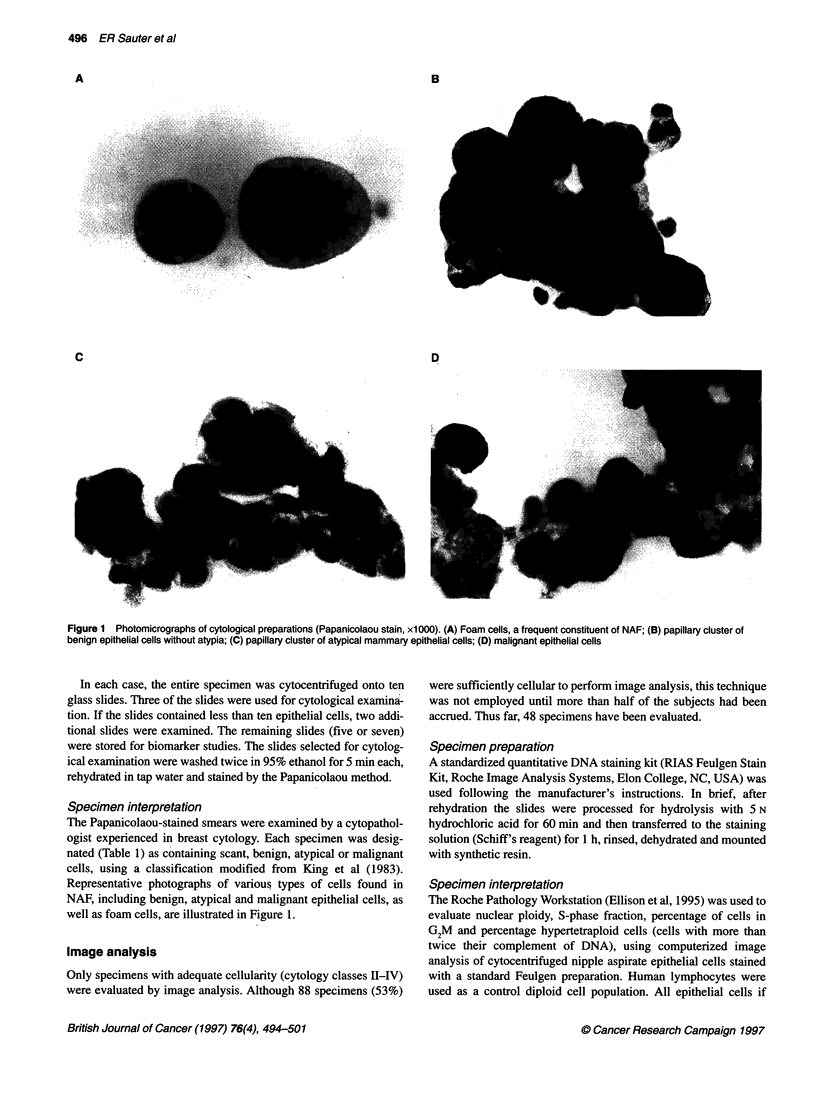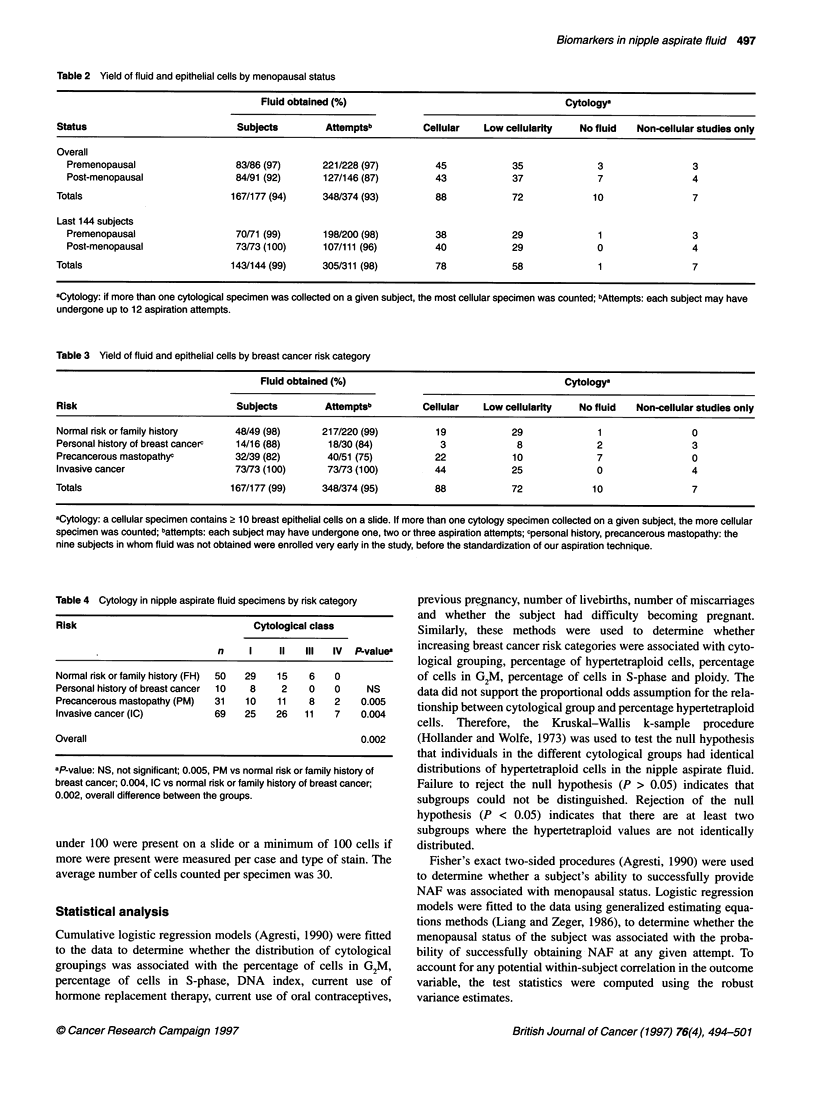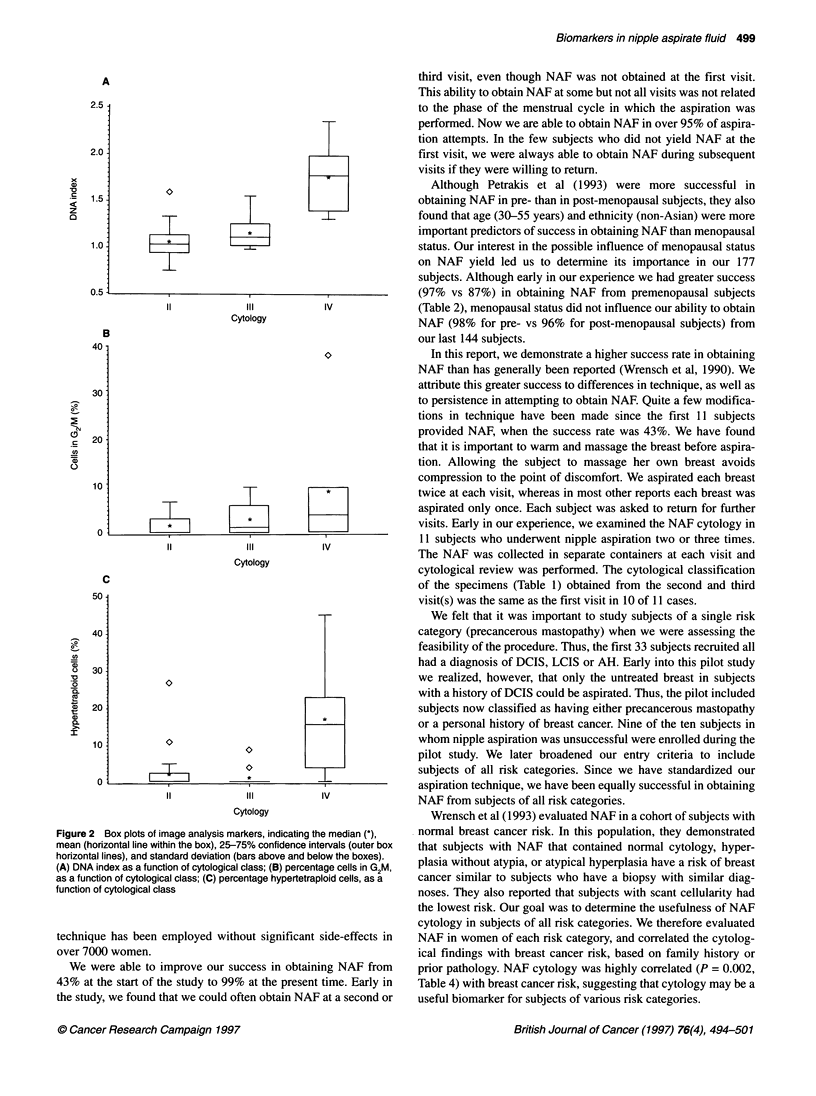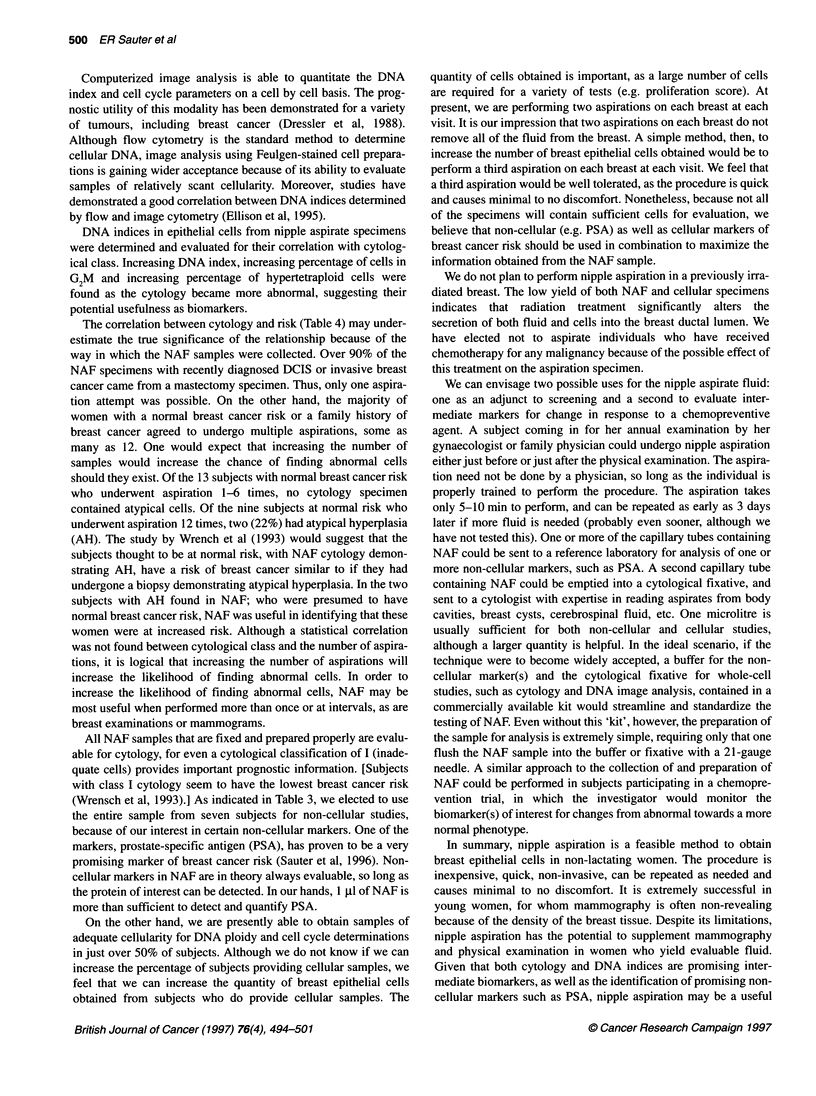Abstract
To evaluate the feasibility of nipple aspiration and to identify intermediate markers of breast cancer risk, nipple aspirate fluid (NAF) was collected from 177 subjects using a modified breast pump. The first 33 subjects demonstrated that we could obtain NAF quickly, reliably and repeatedly. Specimens from the remaining 144 subjects were collected to evaluate promising cellular biomarkers. NAF was obtained in 167 out of 177 (94%) subjects overall and in 99% of the 144 most recent subjects. Sufficient NAF was obtained to evaluate cytology in 160 out of 167 (96%) cases and specimens were sufficiently cellular to analyse DNA markers in 53% of cases. Among the last 144 subjects, menopausal status did not influence the ability to obtain NAF. NAF cytology correlated with increased breast cancer risk (P = 0.002). Using computerized image analysis of NAF epithelial cells, DNA index (P = 0.0002), percentage of cells in G2M (P = 0.05) and percentage of cells with hypertetraploidy (P = 0.002) increased as cytology became more abnormal. Our data indicate that NAF can be obtained in essentially all eligible subjects; that breast epithelial cells are evaluable in > 95% of NAF samples for cytology and in over half of NAF samples for DNA index (ploidy) and cell cycle analysis; and that abnormal NAF cytology correlates with increased breast cancer risk. This suggests that biomarkers identified in nipple aspirate fluid may prove useful either as an adjunct to currently accepted breast cancer screening methods, or to evaluate response to a chemopreventive agent.
Full text
PDF







Images in this article
Selected References
These references are in PubMed. This may not be the complete list of references from this article.
- Dressler L. G., Seamer L. C., Owens M. A., Clark G. M., McGuire W. L. DNA flow cytometry and prognostic factors in 1331 frozen breast cancer specimens. Cancer. 1988 Feb 1;61(3):420–427. doi: 10.1002/1097-0142(19880201)61:3<420::aid-cncr2820610303>3.0.co;2-0. [DOI] [PubMed] [Google Scholar]
- Ellison D. A., Maygarden S. J., Novotny D. B. Quantitative DNA analysis of fresh solid tumors by flow and image cytometric methods: a comparison using the Roche Pathology Workstation Image Analyzer. Mod Pathol. 1995 Apr;8(3):275–281. [PubMed] [Google Scholar]
- King E. B., Barrett D., King M. C., Petrakis N. L. Cellular composition of the nipple aspirate specimen of breast fluid. I. The benign cells. Am J Clin Pathol. 1975 Dec;64(6):728–738. doi: 10.1093/ajcp/64.6.728. [DOI] [PubMed] [Google Scholar]
- King E. B., Chew K. L., Petrakis N. L., Ernster V. L. Nipple aspirate cytology for the study of breast cancer precursors. J Natl Cancer Inst. 1983 Dec;71(6):1115–1121. [PubMed] [Google Scholar]
- Petrakis N. L. ASPO Distinguished Achievement Award Lecture. Studies on the epidemiology and natural history of benign breast disease and breast cancer using nipple aspirate fluid. Cancer Epidemiol Biomarkers Prev. 1993 Jan-Feb;2(1):3–10. [PubMed] [Google Scholar]
- Petrakis N. L., Mason L., Lee R., Sugimoto B., Pawson S., Catchpool F. Association of race, age, menopausal status, and cerumen type with breast fluid secretion in nonlactating women, as determined by nepple aspiration. J Natl Cancer Inst. 1975 Apr;54(4):829–834. [PubMed] [Google Scholar]
- Sauter E. R., Daly M., Linahan K., Ehya H., Engstrom P. F., Bonney G., Ross E. A., Yu H., Diamandis E. Prostate-specific antigen levels in nipple aspirate fluid correlate with breast cancer risk. Cancer Epidemiol Biomarkers Prev. 1996 Dec;5(12):967–970. [PubMed] [Google Scholar]
- Wrensch M. R., Petrakis N. L., Gruenke L. D., Ernster V. L., Miike R., King E. B., Hauck W. W. Factors associated with obtaining nipple aspirate fluid: analysis of 1428 women and literature review. Breast Cancer Res Treat. 1990 Jan;15(1):39–51. doi: 10.1007/BF01811888. [DOI] [PubMed] [Google Scholar]
- Wrensch M. R., Petrakis N. L., King E. B., Miike R., Mason L., Chew K. L., Lee M. M., Ernster V. L., Hilton J. F., Schweitzer R. Breast cancer incidence in women with abnormal cytology in nipple aspirates of breast fluid. Am J Epidemiol. 1992 Jan 15;135(2):130–141. doi: 10.1093/oxfordjournals.aje.a116266. [DOI] [PubMed] [Google Scholar]



